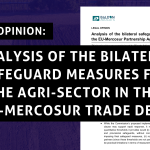A thematic report on the use of human rights in climate change litigation in Europe
Climate change litigation is booming around the world. Figures show that more and more climate cases are being brought before national and international courts. Europe is not immune to this phenomenon. Almost all European countries have climate cases that aim to increase climate ambition or ensure that existing climate obligations are properly implemented.
Many different legal tools can be used to bring a climate case forward – including human rights. Focusing on these rights specifically is relevant for several reasons:
- The link between climate change impacts and human rights violations is becoming increasingly clearer, as climate impacts themselves get increasingly tangible. At the international level, human rights have become an important issue during negotiations on climate change. The Preamble of the Paris Agreement and, more recently, the Glasgow Climate Pact recognise the relationship between human rights and climate change.
- Human rights are a very useful tool to use in the climate governance framework. All European states have a human rights protection system. It can be used to fill the accountability gap when governments or corporate actors fail to deliver on their emission reduction promises, if there is a lack of specific accountability rules.
- There is a real trend towards using human rights arguments and remedies in the courts to advance climate action. Several observers have witnessed a ‘rights turn’ in climate change litigation in recent years. The year 2023 will continue this movement, and strengthen it even further. For the first time, the European Court of Human Rights will consider several climate-related cases. This could have important implications, as judgments of this Court are binding on 46 European states.
The objective of this report is therefore to provide information on human rights based climate change litigation in Europe for a broad, non-specialist audience ahead of important milestones in 2023. It also aims to illustrate the many different ways in which human rights can be used in courts to advance NGO climate action.
The links between climate change and human rights
Climate change will have cross-cutting impacts on a wide range of human rights – such as the right to water, the right to food and the right to health through biodiversity loss. As the IPCC stated in its special report on a global warming of 1.5°C, “climate-related risks to health, livelihoods, food security, water supply, human security, and economic growth are projected to increase with global warming of 1.5°C and increase further with 2°C”. Impairments on those elements will have consequences on the enjoyment of human rights.
It should be noted that litigation in Europe is most often based on the right to life, private and family life, the right to a healthy environment and even the right to equality and non-discrimination rather than on socio-economic rights such as the right to food, water or health. This is because in our legal systems, the first are historically more enforceable in court than the latter.
Analysing the use of human rights in climate change litigation in Europe
The when – Several waves can be identified in climate change litigation, meaning that cases have evolved over time in their nature, in the defendants involved and in their geographical scope. The third and last (so far) commonly agreed wave is understood to have started around 2015, when the Paris Agreement was signed. One of its main distinguishing features is the use of human rights and constitutional law arguments – which is sometimes referred to as a ‘rights turn’ in climate change litigation.
The where – Europe has been the most active region for rights-based climate litigation since 2015. This geographical distribution differs from trends observed in general climate litigation, where the United State is usually the busiest jurisdiction for climate change lawsuits. This may be explained by the fact that Europe has the European Court of Human Rights, a body that has historically been supportive of the use of human rights claims to pursue environmental objectives.
The who – Claimants in rights-based climate litigation are typically individuals and groups (or a combination of both). This can be explained by the fact that individuals are the main bearers of human rights. Defendants in rights-based cases are in the vast majority states and public authorities. This can be explained by the fact that, in human rights law, states are the primary duty bearers. However, in recent years there has been a rapid increase in the number of cases brought against corporations on the basis of their human rights obligations.
The how – There are several ways in which human rights can be used in climate litigation. The first and most direct way is to put human rights grievances at the centre of the case. In such cases, human rights arguments are the only ones that are used before a court. The second possibility is to make a ‘peripheral’ use of human rights arguments. In this case, human rights are used to corroborate and support complaints which are largely based on other obligations, such as administrative or private law obligations. Applicants usually argue that the defendant’s obligations should be interpreted in light of human rights law.
The why – Claimants can seek a variety of outcomes in climate cases based on human rights arguments. The demands of plaintiffs are indeed different in each case and depend on the nature of the defendant. Most often, cases aim to fill any governance, ambition and accountability gaps in the legislative framework.
Focus on specific cases in which human rights are used to strengthen climate action
Over the past few years, several climate change cases had their complaints based on human rights arguments. The report analyses in depth some of these cases, focusing on the role played by human rights arguments, the effects of the case in Court and beyond as well as the role played by NGOs involved in the case. The case analyses are written by those NGOs directly.
- The Urgenda case
In 2013, the Urgenda Foundation, a Dutch sustainability NGO, and 886 Dutch citizens, filed a case before the District Court of the Hague, submitting that the Dutch government’s failure to take greater steps to reduce greenhouse gas (GHG) emissions was unlawful. The plaintiffs sought declaratory relief and a mandatory order that the State increase its climate mitigation efforts, notably in line with best available science and international consensus, as highlighted by the work of the Intergovernmental Panel on Climate Change (IPCC) and decisions of the United Nations Climate Change conferences (COP). On 24 June 2015, the District Court found in favour of Urgenda and ordered the government to cut Dutch greenhouse gas emissions by at least 25% by the end of 2020, compared to 1990 levels. The ruling required the government to immediately take action to strengthen its climate mitigation efforts. The State appealed and, on 9 October 2018, the Court of Appeal of the Hague affirmed the decision of the District Court, on the basis of the State’s positive obligations to protect human rights. On 20 December 2019, the Supreme Court (the highest court in the country) upheld the judgment of the Court of Appeal, confirming the order requiring the Dutch government to do ‘its part’ to prevent dangerous climate change by reducing its GHG emissions by a minimum of 25% before 2020, compared to 1990 levels.
- The Milieudefensie v Shell case
On 5 April 2019, Milieudefensie – the Dutch branch of Friends of the Earth – together with six other NGOs (ActionAid NL, BothENDS, Fossielvrij NL, Greenpeace, Waddenvereniging and Young Friends of the Earth NL) and joined by 17,395 individual Dutch co-plaintiffs filed their summons against Royal Dutch Shell (the Shell Groups parent company) at the District Court of The Hague. Shell was headquartered in The Netherlands and is one of the major players in the worldwide market of oil and gas, with total emissions that exceeds the CO2 emissions of many states. Milieudefensie asked the court for an injunction on Shell to align its policy with the temperature goal of 1.5°C enshrined in Article 2 of the Paris Agreement. Therefore Milieudefensie demanded Shell to reduce its absolute scope 1, 2 and 3 CO2-emissions by at least 45% by 2030 compared to 2019 levels. On 26 May 2021, the District Court of the Hague ruled in favour of Milieudefensie and against Shell. It is the first ruling in the world requiring a private company to change its future climate policies, rather than pay compensation for damage already done.
- The Greenpeace v Austria case
The main applicants in this case were people, symbolically representing groups, that are already affected by the climate crisis today and are fighting for more climate action. One farmer, a climate scientist, the Greenpeace CEE director, a Fridays for Future activist and a multiple sclerosis patient. Furthermore, 8060 petitioners joined the case. On 20 February 2020, the case was submitted to the Constitutional Court of Austria. After the case was rejected by the Constitutional Court on 30 September 2020, a complaint was filed before the European Court of Human Rights, where the case is pending. Originally, the objective of the case was to invalidate the exemption of value added tax on international flights as well as the tax-exemption on kerosine for domestic flights, as they privilege air traffic against other (climate friendlier) modes of transportation, which have no such tax exemption. This approach was taken, since the Austrian Constitution does not allow it to legally challenge the state’s general inaction in regards to combating climate change. Therefore it seemed more promising to focus on climate-damaging state action.
- A Right to Future – The Constitutional Complaint in Germany (Neubauer et al. v Germany)
In February 2020, a group of nine young German people filed a constitutional complaint against Germany’s Federal Climate Protection Act (“Bundesklimaschutzgesetz” or “KSG”) before the Federal Constitutional Court. The applicants were between 15 and 32 years old. They argued that individual provisions of the Federal Climate Protection Act are incompatible with their rights guaranteed in the Basic Law and therefore unconstitutional. In particular, the complaints pointed to the inadequate reduction target of – 55% greenhouse gas emissions by 2030 (compared to 1990), which is backed up by concrete emission quantities per sector. They also contested the possibility of being able to achieve these inadequate emissions reductions targets through emissions trading abroad. In April 2021, the German Federal Constitutional Court (BVerfG) announced its decision to set a new standard for climate action and the protection of fundamental rights. The Court stated that today’s insufficient climate policies affect tomorrow’s freedoms and fundamental rights. It is a constitutional requirement to reduce greenhouse gas emissions and this must no longer be delayed at the expense of younger generations.
- The People v Arctic Oil
This case concerns the validity of the production licences awarded in the 23rd licensing round, the first licensing round opening areas in the Barents Sea for oil exploration (the oil industry’s first step towards expanding into the Arctic on the Norwegian side). It was brought by two Norwegian NGOs, Greenpeace Nordic and Young Friends of the Earth Norway (YFoE Norway), against the Norwegian ministry for petroleum and energy. The case was filed in October 2016. It was before a local court in 2017 and a court of appeal in 2019. Finally, a decision was adopted by the Norwegian Supreme Court on the last working day of the court in 2020. All three levels of the court ruled that the licences were valid, but there were still several victories to be found in how the court interpreted the right to a healthy environment in the context of fossil fuel productions. The organisations, together with six individuals (all youths from YFoE Norway who had worked on the case) lodged a complaint before the European Court of Human Rights in June 2021, where it has been put on hold while awaiting rulings in other climate cases.
- The Swiss Ladies case (Verein KlimaSeniorinnen Schweiz and Others v. Switzerland)
In 2016, a group of senior women (supported by Greenpeace Switzerland), filed a lawsuit in Switzerland against the Federal Council, the Federal Department of the Environment Transport, Energy and Communications (DETEC), the Federal Office for the Environment, and the Federal Office for Energy, alleging that these bodies of the Swiss Government had failed to uphold obligations under the Swiss Constitution and European Convention on Human Rights (ECHR) by not steering Switzerland onto an emissions reduction trajectory consistent with the goal of keeping global temperatures well below 2ºC above pre-industrial levels. Specifically, the plaintiffs alleged the government had violated articles 10 (right to life), 73 (sustainability principle), and 74 (environmental protection) of the Swiss Constitution and articles 2 and 8 ECHR (protecting the right to life and the right to private and family life respectively). After a dismissal and a lost appeal with the final decision from the Swiss Supreme Court in May 2020, the Klimaseniorinnen had exhausted all national remedies available and decided on 26 November 2020 to file the case with the European Court of Human Rights (ECtHR).
- The People’s Climate case
In 2018, families from Portugal, Germany, France, Italy, Romania, Kenya, Fidji and the association Sáminuorra (representing the indigenous Sámi youth) brought an action before the courts of the European union. These plaintiffs alleged that the EU’s 2030 climate target at that time was insufficient to avoid dangerous climate change and that it threatened their fundamental rights. The application had two objectives. The first one was to annul several key legislative acts of the EU climate architecture (the ETS, ESR and LULUCF Regulation). The second objective was to use extra-contractual liability to force the EU to set more stringent greenhouse gas emissions reduction targets. After a first dismissal based on procedural grounds by the European General Court, the applicants appealed the decision before the Court of Justice of the European Union (CJEU). The latter ultimately upheld the first decision and rejected the plaintiffs’ claim as inadmissible on standing grounds for failing to demonstrate that they were individually affected by the climate policy of the EU.



